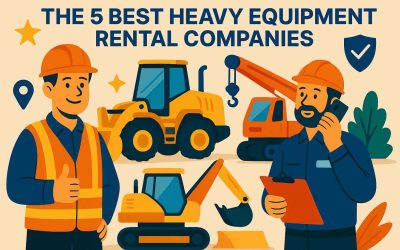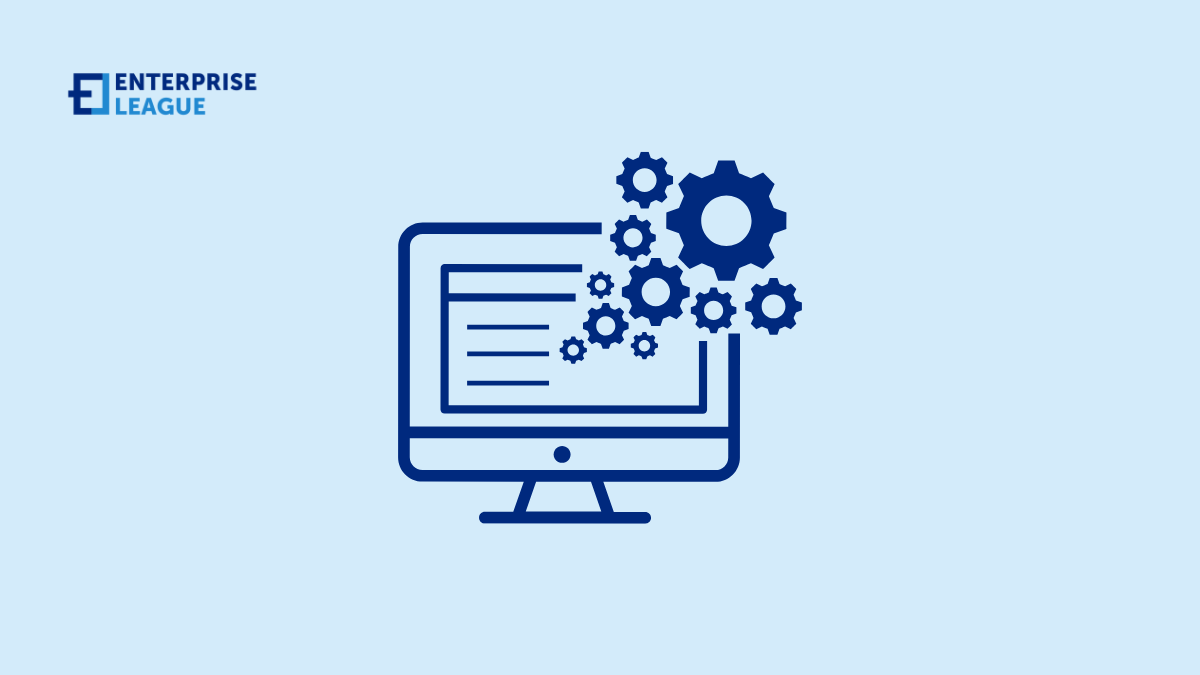Everyday payments should be simple, fast, and cheap. Cryptocurrency promises that, but not all coins are built the same. This article breaks down bitcoin vs. stablecoins so you can pick the right tool for daily use. No jargon. Just clear facts and practical tips....

How to create a killer profile on Enterprise League
If you’ve set up your Enterprise League profile but aren’t seeing results, you might be making some common mistakes. With a number of companies that are trying to stick out and attract clients’ attention, a boring profile means not getting leads and losing a lot of opportunities to your competition.
Creating a killer profile isn’t rocket science and you don’t need to be a marketing genius to make your profile work harder for you, spending just half an hour improving your profile could be the difference between getting passed over and acquiring your next big client. In order to achieve that we’ll show you simple twists that will help you catch the eye of those potential clients and partners who are actively looking for companies like yours.
Let’s get started
When someone clicks on your profile on Enterprise League, you’ve got a few seconds to capture the attention of your reader, and believe us when we say that the first sentence should better be good. Think about what makes your company special. But first things first, click your avatar in the top menu bar and select “Profile”. On your profile page, you’ll notice several sections including about, analytics, services, and reviews. The great thing is, that you can edit everything on the page, and those little “+” icons next to each section are your edit buttons, click them whenever you want to update something.
Each section of your profile serves a specific purpose. Your overview tells potential clients who you are at a glance. The description is where you get to tell your company’s story, from how you started to what you’re focusing on right now. You’ll also need to add basic details like your Company CEO, founding year, and company size.
Make your first impression count
First impressions matter, especially online. When potential clients land on your Enterprise League profile, your image and bio are the first things they’ll notice. Getting these elements right can mean the difference between someone clicking away or reaching out to learn more about your business. Now, let’s break down each element:
Choose a profile picture that tells who you are
Your profile picture on Enterprise League it’s often the first thing potential clients notice. While many businesses default to their logo, consider what image would best represent your company’s identity and values. Think about your profile picture as your business card. It should be professional, yet distinctive enough to catch attention.
Whether you choose to use your company logo, a photo of your flagship product, or a snapshot of your workspace, make sure it reflects the quality of work you deliver. Quality matters and because of that a pixelated logo or blurry photo can make even the most professional company look amateur. Take time to upload a clear, well-lit image that’s properly sized for the platform.
Tell us where you’re based
When it comes to location, be specific. Instead of just “UK,” tell people you’re “Based in Central London” or “Operating from Manchester, serving clients nationwide.” Your location can be a deciding factor for many businesses. Some clients specifically look for local partners they can meet in person. Others might want to know if you’re open to remote collaboration. That’s why being clear about your service area is important, whether you work locally, nationally, or internationally.
Think about it this way, if a client in Leeds is searching for a local service provider, they might skip over profiles that only list “UK” as their location but if you specify “Based in Leeds city center, serving Yorkshire and surrounding areas,” you’ve just made their decision easier.
Create a unique bio that goes beyond the average CV
Don’t just list your services or paste your company history, tell potential clients what drives your business forward. What problems do you love solving? What makes you different from every other company in your field? Your overview and description are your chance to share this story.
You’ve got limited space, so make it worth it, skip the corporate meaninglessness, and focus on real examples. Instead of saying “We’re passionate about innovation,” show how you’ve helped clients succeed. Whether it’s “We cut manufacturing costs by 35%” or “We help restaurants double their bookings,” make every word work for you and your company. Clients don’t care that you’re passionate about excellence, they want to know if you can solve their problems.
Show what you offer
Your service and product section is where potential clients learn exactly how you can help them. Enterprise League gives you the perfect platform to show them and add multiple services or products depending on your company’s type. Each one can include a title, detailed description, and image. Use this space to paint a clear picture of what working with you looks like. Take time to make each listing as informative and engaging as possible – remember, this might be your first chance to impress a potential client.
When adding a product or service, take time to fill in all the details, they matter more than you think:
- Create a clear, descriptive title that includes key features
- Choose the right category to help clients find you easily
- List all important specifications and unique selling points
- Write a detailed description that focuses on the benefits
- Set clear pricing, delivery times, and minimum orders
Your offerings will appear in the Enterprise League marketplace where potential clients are actively looking for solutions and in case you need to make some changes, you can always update each one of those services as your business grows, this way you will keep your content fresh and relevant.
Experiences
Your past work tells potential clients what they can expect from you. Rather than just listing what you do, show them what you’ve actually accomplished. Think of each experience entry as a mini case study that proves your expertise. Add real examples of projects you’ve completed, problems you’ve solved, or milestones you’ve achieved. For a marketing agency, this might mean sharing how you helped a client increase their sales by 50%. If you’re in construction, show that office building renovation you finished ahead of schedule. When adding these experiences:
- Give each project a clear, descriptive title
- Share specific results and numbers when possible
- Explain the challenge and how you solved it
- Include the timeframe and scale of the project
- Add images that show your work in action
- Mention any notable clients (with their permission)
This section builds trust with potential clients by showing them you have a proven track record. Keep your experiences up to date, and don’t be afraid to replace older entries with newer, more impressive ones as your business grows.
Put your reviews to work
Don’t let the good reviews sit there doing nothing. Enterprise League lets you pull in all your customer feedback in one place. Good reviews build trust, simple as that. When potential clients see others vouching for your work, they’re more likely to pick up the phone or make an order.
Those reviews tell you exactly what your business does best. Use that info to fix what’s not working and double down on what is. The trick is to keep those reviews coming and actually do something with them. Every bit of feedback is a chance to make your business better and show future clients why they should work with you.
Website and social platforms
Adding your social media accounts and website to your Enterprise League profile is a smart move for your business visibility. When clients can see your LinkedIn posts about industry insights, your Instagram featuring completed projects, or your Facebook highlighting company culture, they get a better sense of who you are.
Plus, active social media profiles add credibility to your business and show you’re established in your field. Enterprise League makes it easy to connect your LinkedIn, Facebook, Instagram, Twitter, and Crunchbase accounts, so take advantage of this feature to build trust with potential clients.
Conclusion
Your Enterprise League profile can be more than another business listing. With a strong opening that grabs attention, services that focus on solving real problems, solid proof that you deliver results, and authentic photos of your work, you will for sure stand out. And don’t forget to let your happy clients do some of the talking through their reviews. Take 30 minutes today to refresh your profile with these tips because the next big client who finds you will be glad you did.
More must-read stories from Enterprise League:
- Get inspired from this list of creative small business ideas.
- Getting your product in stores doesn’t have to be complicated.
- Learn how to deal with being proffesionally ghosted like an expert.
- Find out how to turn your hobby into a business.
- B2B payment solutions that can help you transform your business.
Related Articles
Bitcoin vs. Stablecoins: Which Is Better for Everyday Transactions?
Independent Reserve Makes It Easy to Buy Bitcoin in Singapore: Here’s How
Buying Bitcoin in Singapore has become increasingly popular, with many investors looking for reliable ways to enter the cryptocurrency market. For those seeking a trusted platform, Independent Reserve stands out as an excellent choice, particularly due to its strong...
Best Market Readiness Programs for Emerging Natural Brands
Eco-conscious companies need a strong brand presence and marketing strategy to win the hearts and minds of customers. Market readiness programs help businesses accelerate growth, ensure regulatory compliance and optimize go-to-market strategies. For manufacturers...
5 Best Heavy Equipment Rental Companies
Choosing the right equipment rental provider is crucial for construction projects, as contractors need dependable machinery and tools they can count on. The top heavy equipment rental companies stand out through exceptional service, modern equipment fleets, and a...
Why You Should Avoid Big E-commerce Platforms When Buying Tools
The convenience of one-stop shopping has changed how we buy everything from household items to professional equipment. Major online marketplaces advertise endless selection, low prices, and fast delivery straight to your door. But when it comes to tools, whether for...
















